Reactivity in dogs and puppies is something that happens when a few things go wrong.
Reactivity can be mislabelled as aggression, and it can look terrifying with an anatolian shepherd and can seem humorous when it’s a jack russell. But it all boils down to the same thing, really.
Fear.
- My Experiences With Reactivity.
- A Breed Predisposed to Anxiety & Reactivity
- Poor Breeding
- Bad Experiences
- Medical Issues
- Early Steroidal Use
- Check if it’s medical
- Moderate Expectations
- A Note About Aversives
- This goes back to Maslow’s Hierarchy of Needs
- Muzzles
- Harness
- Lead or Leash
- Collar
- Something missing?
- A Note About Board And Trains or Doggy Bootcamps
- Distraction
- Distance
- Duration
- Ready?
This is a demonstration of your dog or puppy being afraid. It can seem ridiculous, trust me, I understand that it’s totally daft that your dog is looking at a puppy or a dog, or even a person, and they feel fear.
It can be totally mystifying, it was for me!
My Experiences With Reactivity.
I have or had a reactive dog. Indie, my German Shepherd cross struggled to contain his fear, and the dog I had who was wonderful and social, and adorable and was praised regularly – turned into a beast, I had no idea who he even was. It was like he turned a year old (we’ll get into this later) and he just became a totally different dog.
I had loads of input from friends “He’s trying to become an alpha”, “He’s just aggressive”, and then the ones I had from strangers killed me, questions like “Is he a rescue?” as though I had done it to him…
I tried a few things with no success, and there was a lot of confusion, and a lot of tears. Then I decided to take control of it. The Trainers local to me weren’t giving me the understanding I needed to proceed and help my puppy get over it.
He’s actually the reason I became a trainer.
I trained myself, to train him to get him over it. I found a lot of my local trainers were using methods I didn’t agree with and I knew wouldn’t work for my dog.
(This is why in the pupdates, that I am massively passionate about you doing this with your puppy. It’s really important that you can be this, because you’ll instinctively know when something will or won’t work, and when you can take a chance with something vs when you won’t.)
I then started attracting the large and grouchy dogs? Because people knew I could handle them! This then developed though into today’s business. Slowly, I began to realise what was going wrong was often happening at young stages and I could have avoided it with a little more support.
I’m a massive advocate of getting things right from the start? And that’s partially where the pupdates come from!
Anyway, let’s move on from your Rebarkable History lesson…
What Does A Reactivity Look Like?
Usually? Barking, lunging, slathering, whites of their eyes showing, lots of teeth, hopefully straining at a leash and not pinning another dog to the floor or chasing them across a space. Hackles will be up. It’s pretty intimidating! But it’s intimidating for a purpose…
Why Do Dogs Become Reactive?
There are a lot of reasons that a puppy develops reactivity as they grow. I want to go through a few of them, but bear in mind, it often is the case that it’s a mixture of these things. This also isn’t an exhaustive list? So, consider these a guideline.
A Breed Predisposed to Anxiety & Reactivity
Certain breeds have a disposition towards anxiety (or towards “aggression”), for example, Daschunds have both stranger danger (usually reactivity directed towards humans), Jack Russells, American Pit Bull Terrier, German Shepherds, English Springer Spaniels, Chihuahuas and Akitas are examples of breeds isolated for their “dog directed aggression”. The point being? That a lot of dogs can struggle, it doesn’t matter about shape, size, or gender, any dog can struggle with this.
This can and should (in most cases, though not in all) be something that is not a desirable trait when breeding… So, a well bred example of these dogs should not be reactive.
(Duffy, D. et al. “Breed differences in canine aggression.” Applied Animal Behaviour Science 114 (2008): 441-460. – read here )
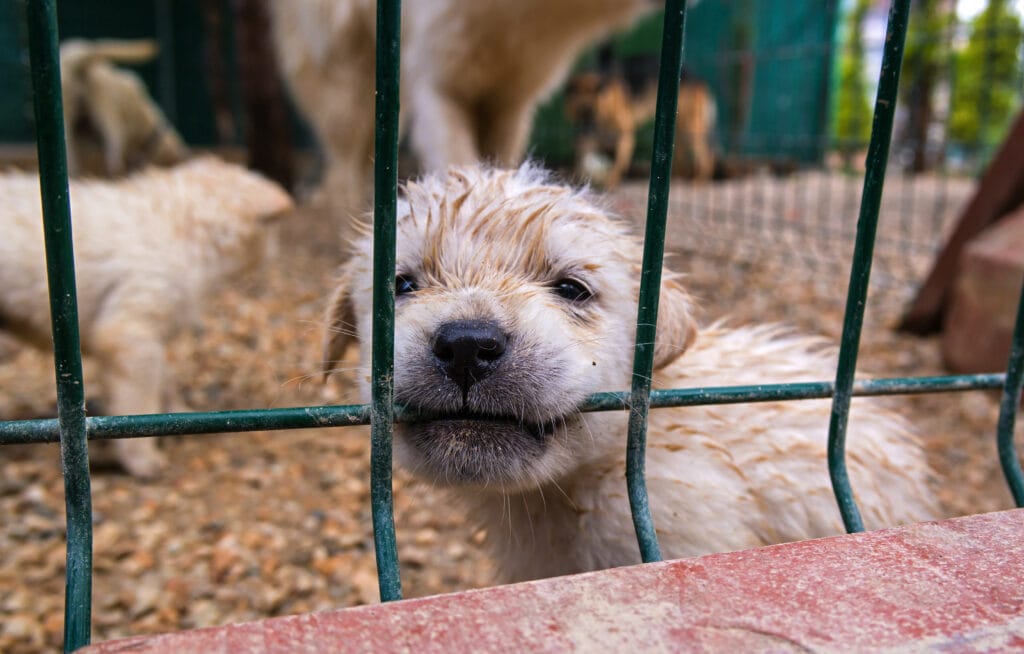
Poor Breeding
As mentioned above, breeding plays a part in reactivity, because a reactive mother or father will have a chance of having this reactivity coded into their DNA via epigenetics. When breeding from a reactive dog (mother or father) can transfer a proportion of this fear or disposition to their pups.
Next, a lack of resources during the mother’s pregnancy can also result in a disposition towards anxiety, be that physical love, temperature regulation, nutritional deficiencies, water etc can all contribute towards an anxious mother who relays all of this information to her pups, they’re born into ‘deficiency’ so they come out more ready to defend what they might need – biologically it makes sense.
This is one of the many, many reasons that puppy mills are a really awful thing.
Bad Experiences
I mentioned epigenetics earlier, but it applies here too. If your puppy has bad experiences during socialisation? It can result in a mentally scarring event that associates other dogs, or humans, or children, or old people, with bad things.
Medical Issues
Gastrointestinal issues are something that are renowned for being problematic when it comes to reactivity. It’s basically, stomach feels off? It puts them in a bad mood, and increases their likelihood to act in a reactive manner. Pain can be the same too, so hip or elbow dysplasia etc can cause your dog to act in an unusual manner, and can be the cause of reactivity.
Early Steroidal Use
Medical issues that result in the application of some steroids? Can actually impact the nose for a limited period of time and decreases your dogs ability to interpret smells. These things recover, but continued application at a young age, may result in a dog who does not rely on their nose as much as they should, which can impact the way they see the world, and cause aggressive acts towards other dogs… This one really shocked me when I found that out.
(Jenkins, E. et al. “When the Nose Doesn’t Know: Canine Olfactory Function Associated With Health, Management, and Potential Links to Microbiota” Front. Vet. Sci. (2018) – read here)
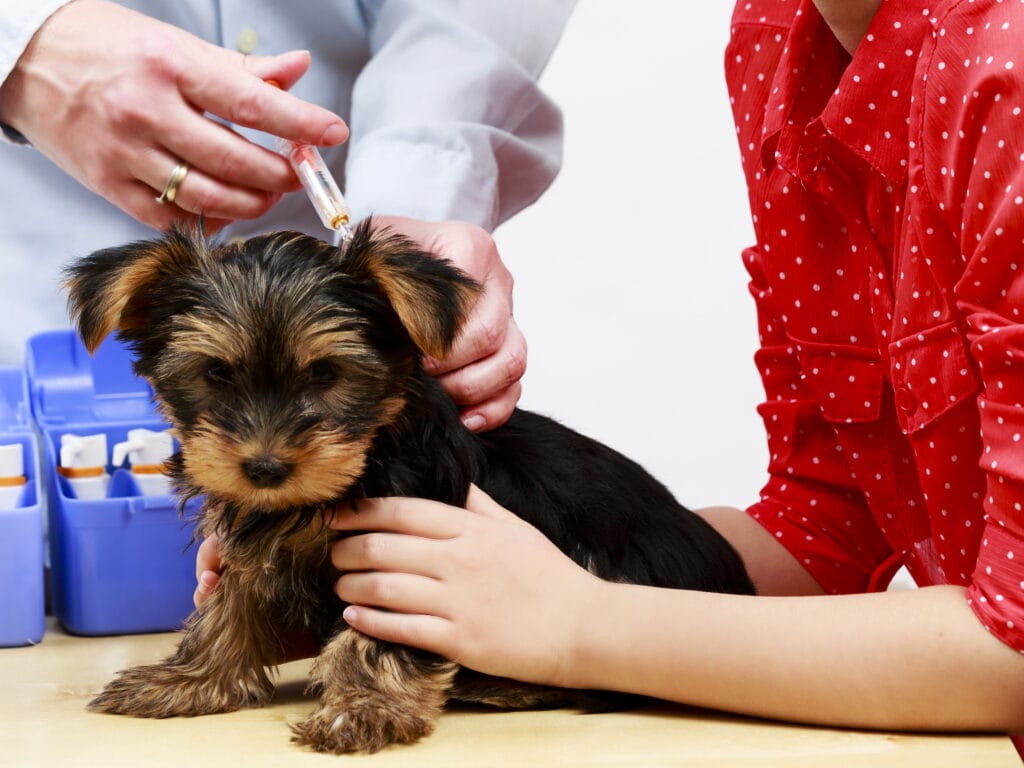
When Does Reactivity Tend To Show Itself?
From my experience? It tends to be around the second fear phase of development that dogs will “naturally” begin to demonstrate their fear? This happens earlier for small dogs (from about 7 months onwards) than it does large dogs who will experience if from about 11 months.
What Are Fear Phases?
Fear phases are developmental phases of a puppy’s life where they learn to be cautious again. It’s the phase of learning where they begin to demonstrate an aversion to certain things that may be strange, odd, peculiar, new or otherwise.
This is why quality socialisation is really important. The more you can expose your dog to, safely and positively, the easier this phase will be. However, if they have had a bad experience, you can work through it, but it may also raise it’s ugly head in this phase with a little more umph.
So, with that covered, let’s move on to the pre-training questions or assessments that you should make before tackling your dog’s reactivity.
Before we begin…
Check if it’s medical
Sometimes reactivity can be medical, so please do get your dog checked out by a trusted veterinarian and worked over for any ‘anomalies’ because you’d be surprised how much reactivity is associated with gastrointestinal issues, actually!!
And something that can assist, and vets are discussing more, is CBD, and there is a great complete guide to cbd for dogs article to read here.
Moderate Expectations
The chances are – your dog is always going to have some aspect of this – and especially when you’ve got a reactive dog.
They can learn, they can progress, and depending how much effort you put in (and be realistic here) they can become totally okay with dogs again – however it’s much more likely that they’ll be ok if they have to, but they’d still rather not. So, just make sure that you don’t make ‘dog parks’ a required thing in your existence.
Ok, now, let’s look at understanding the reason she’s doing what she’s doing and why she’s scared of the other dog.
Understanding The Current Cycle Of Reward.
Reactivity is a demonstration of fear. Caused by the fact that your dog perceives a threat to his safety.
The current reward cycle is as follows
1️⃣ sees dog
2️⃣ safety threatened
3️⃣ bark at dog and be generally terrifying
4️⃣ dog goes away
5️⃣ safety restored
6️⃣ dopamine rush (aka reward)
This is a self-rewarding cycle for reactivity that we need to break and reprogram.
Reprogramming this cycle isn’t easy, it is not a quick fix. There are no quick fixes that create a reliable response and do not place your dog under massive amounts of stress. This methodology creates reliable results – when applied with consistency.
The way to break and reprogram this cycle is by done in two ways:
Desensitising – making a scary thing less scary
Counter Conditioning – crafting a positive association with a ‘scary thing’.
A Note About Aversives
Aversives means a tool that applies discomfort or pain to achieve a goal. The can be things such as “Leash pops” on a slip lead or choke chain, they can also be a prong collar, or an e-collar.
These types of training methods force a dog into a state of forced helplessness that can be incredibly detrimental to their mental wellbeing – imagine being scared of spiders, and being forced to go into a room with Shelob or Aragog (Lord of the Rings and Harry Potter references. If you’re not a giant nerd like me? Think about freakishly large spiders) when you’re arachnophobic.
It won’t work. It’s going to make you more scared overall, and I know I wouldn’t trust whoever was putting me in that situation.
Herm Sprenger (the leading brand for prong collars) have this to say about their own tools (in this case aggressive can be replaced with reactive, it’s a switch of terminology depending on which sort of training methodology you use).

This goes back to Maslow’s Hierarchy of Needs
You don’t need to read this bit if you’re not interested, but for those who are as geeky as me? This will help you understand.
Dogs need certain things to thrive. The best example of this is a canine translation of Abraham Maslow’s Hierarchy of Needs – for humans.
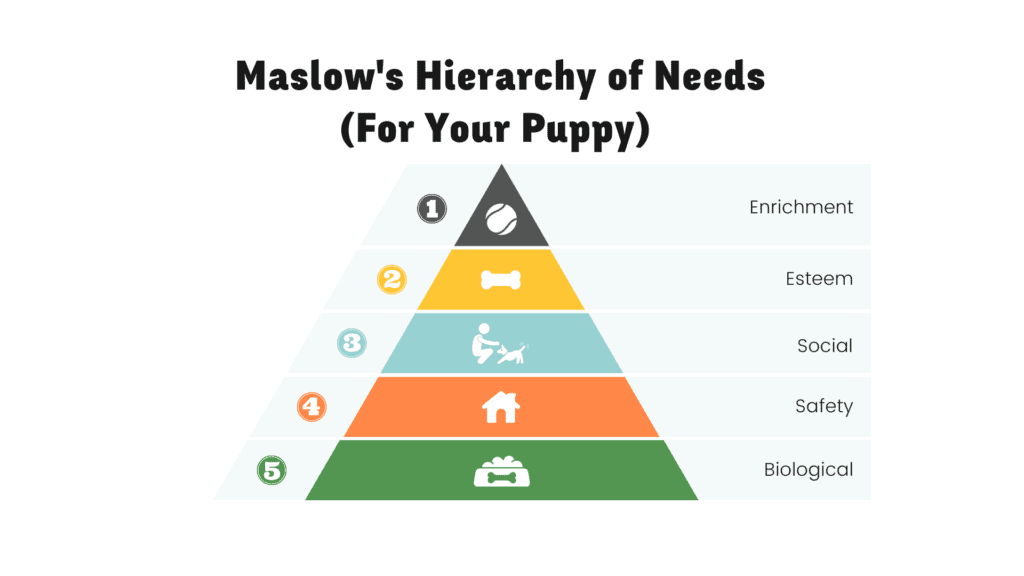
There are 5 stages, where each of these things will contribute towards your dogs happiness and wellbeing. A balance of these things is needed throughout training.
1 – Enrichment
Enrichment (a training buzz word for mental stimulation!) is a wonderful way to cap off a happy dog. Problem-solving and training, dog sports and all sorts of other things that can keep your dog demonstrating natural behaviours that they thrive on.
2 – Esteem
Some trainers refer to this as the need for force free training (Preach!) but this lends itself back to Maslow’s original statement of Esteem. Dogs have esteem as much as humans do! And positive reinforcement (or fear free, or force free) is scientifically proven to create a more optimistic dog.
(Vieira de Castro, AC et al. “Does training method matter? Evidence for the negative impact of aversive-based methods on companion dog welfare PLOS ONE 15(12) (2020) – read here)
3 – Social
Dogs are social creatures! They need to be around other dogs and people (especially their people!) and have fun. This contributes towards happiness – for pretty obvious reasons, right?
4 – Security
Dogs need a home, a comfortable home that has love and consistency. Security is something we all need, it’s something that needs to be present for happiness and wellbeing.
5 – Biological
This one covers the ‘basics’ like food, water, safety, shelter, medical needs etc. This one is the foundation for a reason. It’s also the one that is going wrong with reactivity. Because the thing that is being compromised (at least in your dogs mind) is their safety.
Set Foundations
A few critical skills will be necessary, getting things right from the start can be really important, and before you go looking at any of this. My suggestions for what you may want to work on before you go into this? Is to master a loose leash walk, a focus, a sit, and the ready cue (see below!).
1 – Pick where to train
Go scout a suitable location for the training. This is going to be a space that will set you and puppy up for success. It’s something that will be really important to help you and woof make progress. I would suggest limiting your walks to this one location as the same-ness for an anxious dog can be incredibly beneficial. They like the predictability.
When you’re scouting for a location, I want you to look for four main things.
a) Ample space
b) Good visibility
c) Good Dog owners
d) not too many dogs
All of these factors will help you to control the situation and helps you Set Up For Success whilst training your dog.
2 – Pick the Right Equipment
The right equipment is so important. Not only will it give you peace of mind that things won’t happen beyond your control – but it will mean that things don’t happen beyond your control and that your training doesn’t regress for an avoidable incident such as a piece of equipment breaking.
There’s a few things on this list that I want you to consider, not all of them will be applicable, but they’ll definitely help you make informed choices about your dogs equipment.

Muzzles
This is your ‘ultimate back up’ – it takes some work (and please look into proper desensitisation of muzzles!) but it can be very worthwhile to know that even if the worst thing happens? That your dog cannot do any damage – it does of course mean they are still able to take damage – but it will save a lot of hurt.
When picking a muzzle, always chose a basket style muzzle, there should be enough space to fit a tennis ball in their mouth – and hopefully space to deliver treats.
As an entry muzzle, we really recommend the Baskerville Ultra as a starter muzzle (if you need one for a longer term, there are better options!). They’re pretty durable and come in a lovely range of sizes, so you should find one that fits, you can deliver treats easily and they have the ‘desired effect’.
Do remember that this will limit your dogs’ ability to play and if you use play as a reward, then you’re not going to be able to use a muzzle.
Harness
This one you really do need to consider. You have two choices here which I think are advisable to consider, one is a harness with a tummy strap – if you have a wiggler? You’re going to want this one. It gives a lot of extra security because it’s not going anywhere – also – a lot of this kind come with a handle – which I love! My favourite is the Ruffwear Flagline and Webmaster (they’re pretty much the same) for this choice!
Then you have a two point harness – this has a clip on the chest, and on the back – which means you have added control on your dog – which with a reactive dog is a great thing! My favourite here (again if you follow my posts, you know what’s coming!) is the Ruffwear Front Range or a perfect fit harness with the optional extra D-ring on the chest (obviously).

Lead or Leash
You want a lead you can adjust the length of, so that should it be a pretty empty day in the park, you can enjoy the park/walk/route a little more, or shorter if you need them close by. My favourite for flexibility is the Halti training lead – it’s double-ended and it has a series of rings where you can clip the leash back to itself.
It works really well with a two point harness, or a normal one. It’s very flexible, and that’s a massive bonus when you have a dog with reactivity!
Collar
A properly fitted flat collar can also be a useful secondary point of attachment if you dont opt for a two point harness. And, anyway! Some places are legally obliged to have them, so make sure you’re compliant with your local laws.
Something missing?
Now, a few of you will be surprised I haven’t listed a headcollar in this piece. Well, if you’re surprised, why not read this piece on my opinion on headcollars – and i want you to know that this is totally achievable without them! However, if you deem this the best thing for your dog and you, then that is (as always!) your decision.
The only thing I will say? If you choose this route, make safety paramount and get a double ended leash like what’s mentioned above and attach the other side to a collar or harness – whether your dog has reactivity or not, if your dog gets into a pickle? You need to have a reliable way of getting them out of it. Pulling them out of a river by their headcollar? Is not appropriate.
A Note About Board And Trains or Doggy Bootcamps
Bootcamps or Board and Train environments where they take your dog for a week, two, or more can work, however, they cannot emulate the environment in which you need your dog to be learning in. Whilst they can expose your dog to other dogs, or humans and make it a safe experience, it will always be somewhat limited. Also, make sure they’re using positive techniques because of the reasons above!
3 – Pick your motivations
Well, more your dogs motivations? But you will need to come armed and ready with premium treats in order to make sure you can not only get but maintain your dog’s attention.
Also! Remember that not all dogs love treats, you may want to pick a toy, if they’re ball oriented, a ball on a string works really well! Or even a tuggy toy if that’s what they love.
4 – Know your Dogs Threshold
Bzzzzt – another buzz word for trainers huh? Ok, let’s try it like this.
I like to visualise it as your dogs ‘personal space bubble’ – this is a safety zone and it’s within which your dog feels safe. Reactive dogs have a much bigger bubble than your average woof.
We describe the ‘threshold’ of your dog as the boundary of this bubble, one side of this imaginary line, your dog can concentrate on you, on the other side your dog can only focus on the inbound threat. You need to balance their reactivity with their ability to listen in order to find that sweet spot where you can trust that they’re learning.
Side Note: The 3 D’s
Distraction
Distraction! This could be a squirrel, it could be another dog, it could also be your partner, child, a cat, or a ball. This is anything that is liable to grab your dogs attention above their desire or ability to listen to you.
This is normally the primary reason your dog won’t listen. This is also often the reason that people call their dog “Stubborn”. Stubborn isn’t really appropriate as a term to describe your dog.
It’s not often that your dog is going to sit there and go “You know what? I know what you’re asking me to do, but … nah, not today.” It’s actually more “Ok, you want me to do that? But I’m in the middle of napping and that’s more rewarding for me” (Semantics perhaps! But it’s also about mindset and understanding your puppy!)
So, what do you do about this?
Decrease the distraction, or increase the appeal.
Distance
If you are anything like me, the chocolate bar sat in front of you, is more powerful than the chocolate bar in the cupboard, which in turn is more powerful than the one in the shop!
The same can be said for dogs, the sausage frying in the pan is tempting, but the sausage in their bowl is irresistible. So! What do we learn from this? Distance has power.
If we move our dog away from a distraction (say) or from something they desire, then they are better able to control the impulse to do something they shouldn’t. It’s about enabling your dog to make the right choice, and only pushing that boundary gently, and slowly, with plenty of praise and support through the process.
Duration
This one very much explains itself. So, you know when you ask your pup to lay down? You’re not going to expect that to last long initially, but slowly you can build that up. Why? Because you’re asking them to focus slowly. Increasing expectations gradually – that part is so important.
Asking too much, too quickly will mean that your puppy’s focus drifts.
4 – Begin Training
Now that we understand reactivity, we have the right tools and we know where we’re going – we can begin training.
We need to walk that line. That distance is our starting point and you’re going to work it. Keep that distance from any dog at a minimum (even if this means walking circles around to avoid other dogs) and begin getting your woof focus, and rewarding them for it.
You can sit, you can move, whatever you find the most useful or will suit your girl best. – I will say though, moving past increases tension but decreases the duration she has to focus on you, even a light jog can be a great option.
Make sure to keep their focus on you, introduce a treat or a toy, and keep working, focused or playing – positive experiences, remember?
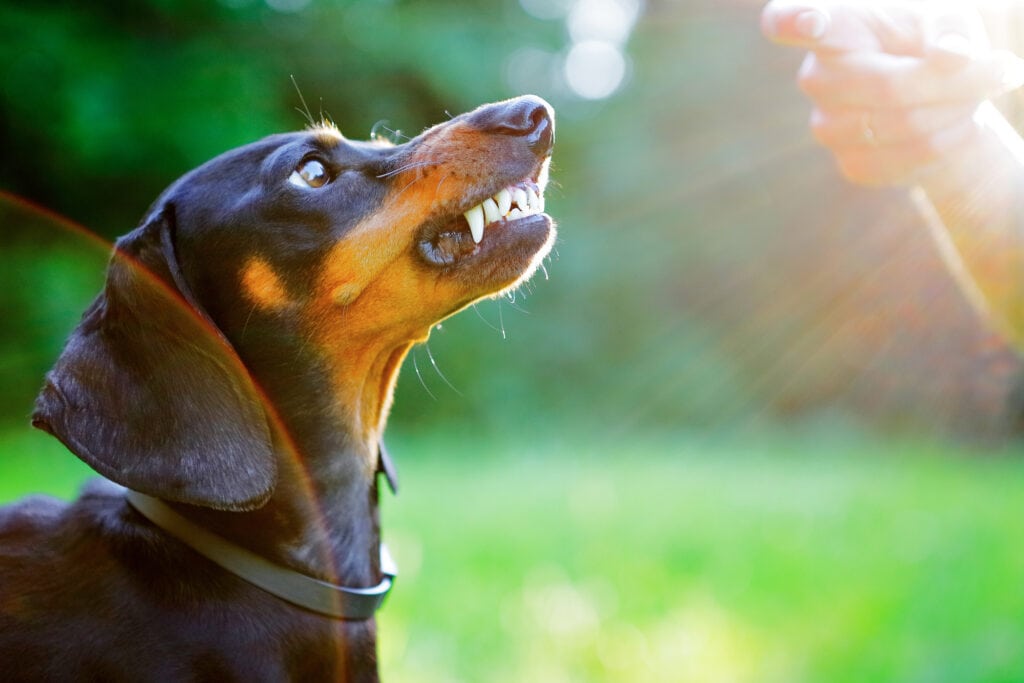
By introducing fun and distracting his focus into good things (as opposed to bad) you’re beginning to introduce the idea that that dog isn’t that scary and your dog doesn’t need to do a war dance to scare them away.
As you start seeing success and this distance is less scary.
If you’re not seeing success? Increase the distance from you to the ‘trigger’ and try again (or if you’re really struggling, get in touch and we can book in a 1:1)
5 – Decrease distance and repeat.
At this stage? We make the distance smaller.
And the process begins to repeat until you feel safe and confident with your dog. A reactive dog may never become a dog that actively wants to socialise with other dogs, but (in my opinion at least!) they really don’t have to do that to be happy.
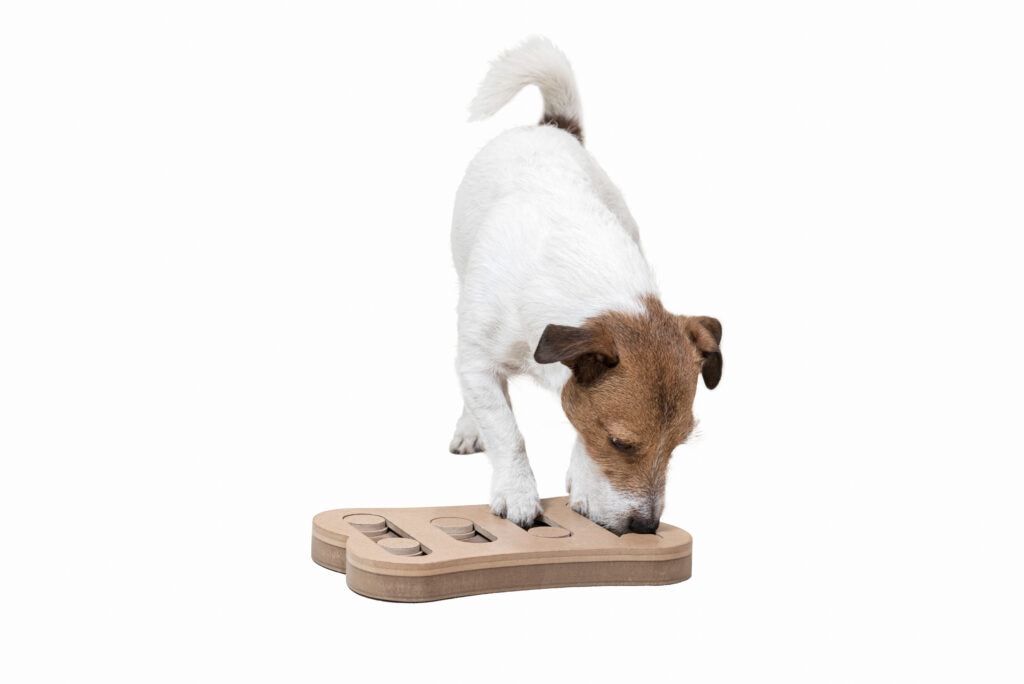
6 – Look at Enrichment
Remember when we talked about Maslow’s Hierarchy of needs? Enrichment was the top one! So make sure that you’re adding in a lot of considered enrichment to satisfy your dogs’ natural needs and desires, this can help your pup to raise their general mood, which can, in turn, have a rather profound outlook on their reactivity.
7 – Install Emergency Protocols
I want you to install one of these in your life, because it makes a lot of problems easier, it means you can tackle a lot of scenarios with a surprising amount of efficacy – with one fairly simple cue…
Ready?
Yes you are – aren’t you? Good!
See what I did there?
That’s what you’re going to do. Charge it up in as many situations as you can when you don’t need it – don’t question it at this stage, just go with me… When you throw a ball. Before you play a game. Before you go running across the room and get your dog to chase you. Before you open the fridge and give them a delicious piece of chicken. Before you do anything your dog might see as exciting?
Go “Indie, Ready?” And don’t just ask if they’re ready… be exciting! “Ready?! You ready puppy?!” Build the excitement and anticipation, because when you do the thing they want (the reward…) you’re associating Ready with excitement, which means they’re instantly focusing back on you.
So, when you see a problem that’s going to be really tough to overcome? Go “Ready?” to your woof, and then run in the opposite direction, or the same direction or at an angle! That’s super exciting, and it should tear their attention away from whatever trouble you’re about to get into and in a positive way! The industry calls this a ‘positive interrupter’ if you’re curious!
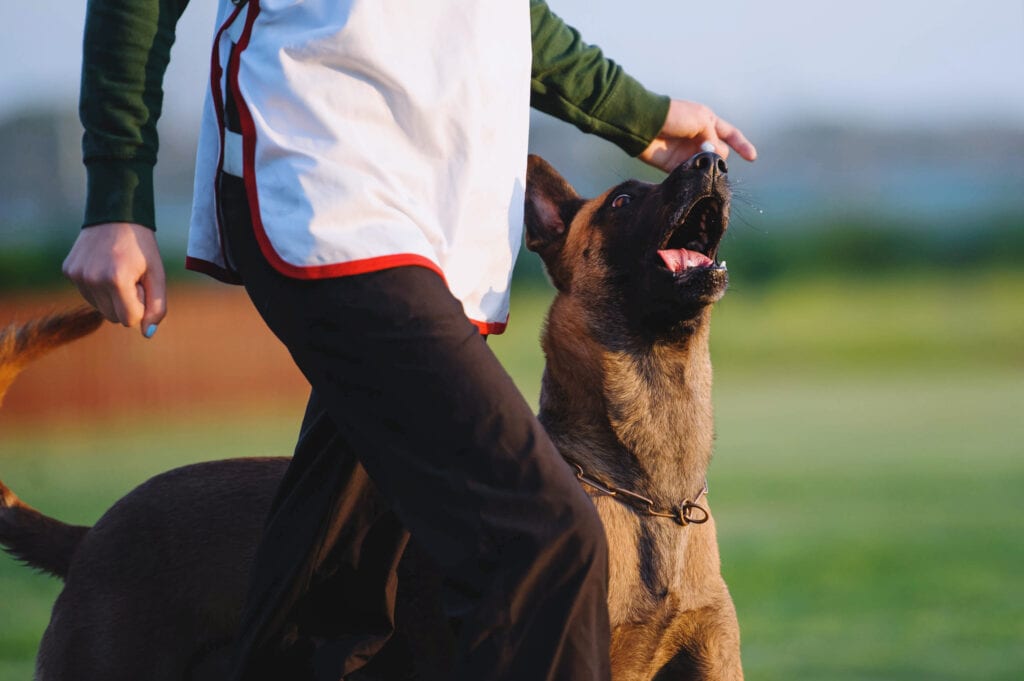
Lots of reading, eh?
It’s a complicated subject, but I’m committed to giving you guys as much information as possible so that you have the tools to do it yourself. If you want? Another thing that can support you in this adventure (it’s going to have a lot of ups and downs because certain things are beyond your control) is to look into Doggie Language, by Lili Chin? It’s a wonderful pictorial dictionary of canine body language – it’s one of my favourite books and works for all ages.
When Do You Need A Trainer?
Please do not be afraid to get in a professional trainer.
A good positive trainer who specialises in reactivity can be a massive help here. Because sometimes you need a little guidance, you may need an external set of eyes. You may want a trainer who works locally to you, you may be able to record it and submit it to an online trainer who can break down what the issue is.
If you need me? I’m happy to help in a private session, but they’re not listed on the site right now! Email me though, we can always set something up!
(I’m also considering doing group zoom classes for this! What do you think?)

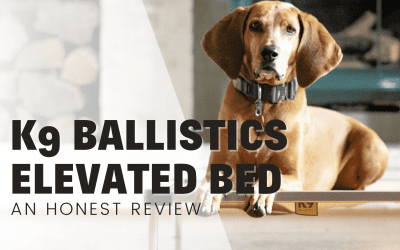
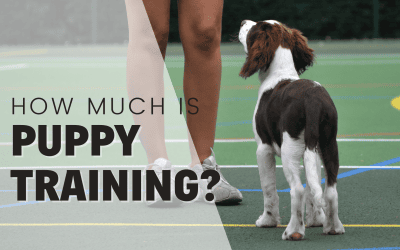

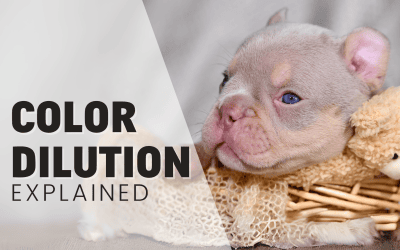
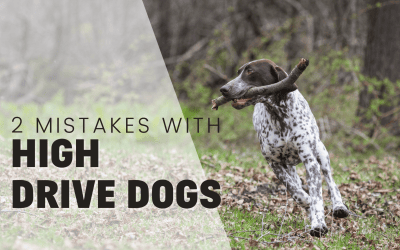
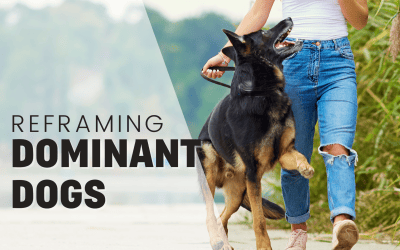
I really needed to read this, I feel like i can actually cope with my dogs reactivity now. thank you.
It’s really a nice and helpful piece of info. I’m glad that you shared this useful information with us.
Please keep us informed like this. Thank you for sharing.
I’m amazed, I have to admit. Rarely do I come
across a blog that’s both equally educative and interesting, and let me
tell you, you have hit the nail on the head. The issue is
something that not enough folks are speaking intelligently about.
I’m very happy I came across this in my search for something relating to this.
Hey Belinda! Thank you, I’m delighted you found it useful! IF you need any help, let me know.
I’m delighted to have read this, my reactive dog is such an emotional rollercoaster too, it’s so hard to go from day to day, but this has helped, thanks Ali. We’ll keep trying.
Fascinating article and devoured but I just cannot distract my dog well enough when he sees another dog. Even when walking away he will walk backwards to carry on barking. I dread walking in case we meet other dogs. Help 😢
Ahhh! First, I’m glad you found it useful! If you can’t distract him? You’re too close. If you can get a little more space, his focus should come.